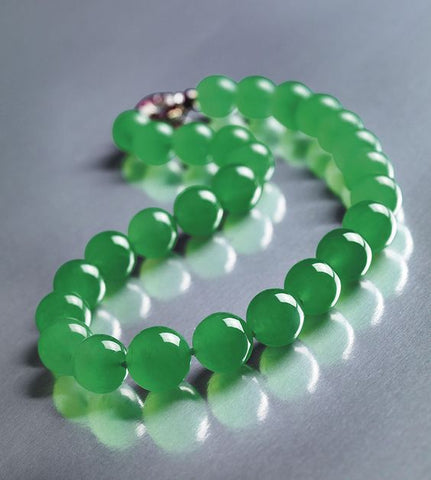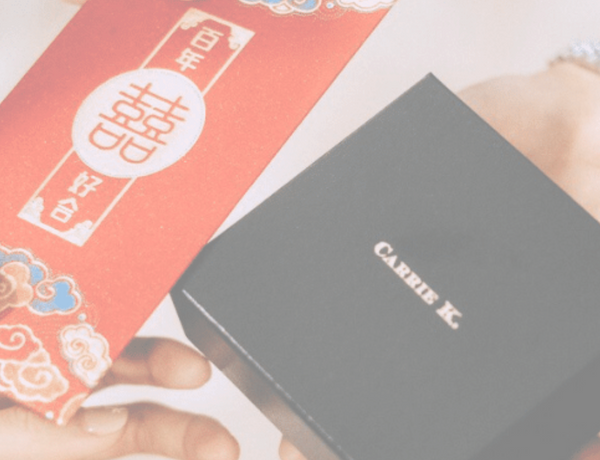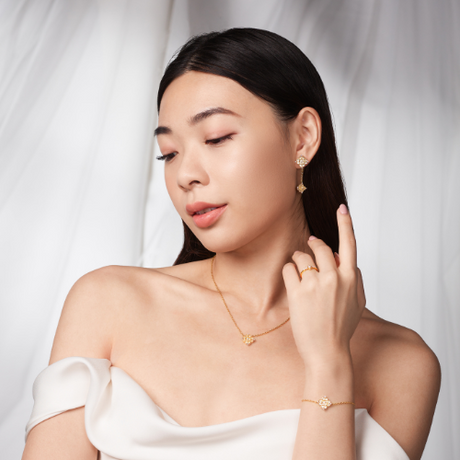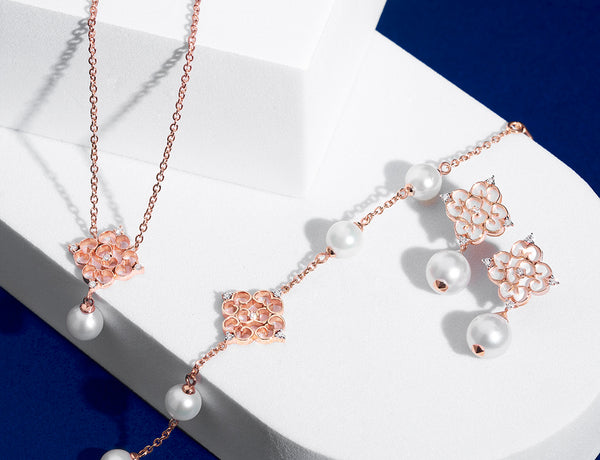What is Jade?
Commonly known as 玉 (yù) or 翡翠 (fei cui) in Chinese, Jade is made up of two separate gemstones — nephrite & jadeite. It is a spiritual stone known for its high durability and significance in Chinese culture because of its beauty, practical use and value.
In ancient China, Jade was regarded as the most precious stone as well as a symbol of good luck, prosperity and success. In fact, it was so highly valued that it resulted in a saying that goes “Gold is valuable while Jade is priceless.”

Image credits: https://www.gia.edu/
Today, Jade is still widely valued and appreciated by many, including brides-to-be who are on the lookout for their ideal Si Dian Jin 四点金. While green is the traditional and most sought-after colour of Jade, this gemstone also comes in other colours such as white, lavender, yellow, orange and black.
What are the different grades of Jade?
The general rule of thumb when it comes to discerning the different grades of Jade is that the more translucent it is, the more valuable the Jade is perceived to be.
In fact, the finest-quality Jade which originates from Burma, is almost transparent with a vibrant, emerald green colour. This king of all Jades is dubbed as the “Imperial Jade”.

Image credits: luxatic.com
What about other grades of Jade? How do we differentiate them respectively?
Here’s a simple guide that you can follow:
Type A - Natural and free from any forms of chemical treatment.

Image credits: gia.edu
This is the most valuable and rarest type of Jade.
Type B - Chemically-treated, bleached Jade.

Image credits: mays.com.au
The bleaching process helps to improve the overall colour of the Jade by reducing any undesirable brown, black or yellow hues. Polymer resins are also inserted to strengthen the Jade and increase its transparency.
Type C - Bleached and has undergone dyed colouring.

Image credits: gia.edu
Left: In natural light, the green band in the lower right section of the jadeite specimen is caused by natural chromium, while the other green spots are the result of a dye treatment.
Right: Long-wave UV light shows a strong fluorescence from the dyed areas, with little to no fluorescence from the natural green area.
Has all the qualities of a Type B Jade and has also been dyed to enhance its colour consistency. A heating process is usually involved to aid in the absorption of the dye.
Symbolism of Jade as Bridal Jewellery
In the past, Si Dian Jin sets were solely in pure yellow gold. However, it is now common to see rose and white gold Si Dian Jin in more contemporary designs that feature gemstones such as pearl and Jade. Aside from the classic emerald green Jade, ice and lavender Jade have become increasingly popular in recent years.
In addition to being a lovely touch to a modern bride’s ensemble, Jade is also said to protect one’s marriage from misfortune and bring good luck. A classic token of love and harmony — qualities that are essential for an everlasting union.
Carrie K’s Jade Si Dian Jin







Here at Carrie K., we use Type A Jade to ensure the highest quality for our clients. From pendant necklaces, to beaded bracelets as well as versatile ear jackets, these are some of the highlights from our line of Jade jewellery designed for modern brides who fancy classics with a twist. We also hope we have provided you with some useful starter tips on understanding more about Jade.
If you would like to explore a wider range of original Carrie K. bridal jewellery for your wedding day and every day after, do not hesitate to click here to be spoilt for choice!
Should you wish to view our full range of jewellery at our atelier, simply book an appointment with us and we will be happy to arrange a personalised consultation for you.



